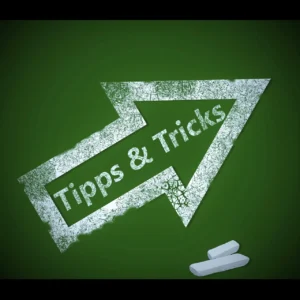In today’s competitive digital landscape, mastering the art of copywriting is essential for businesses aiming to capture attention, engage audiences, and drive conversions. Effective copywriting not only communicates a message but also persuades readers to take desired actions. This comprehensive guide delves into successful copywriting tips, providing detailed insights and examples to enhance your writing skills and boost your brand’s visibility.

1. Understand Your Target Audience
Before crafting any copy, it’s crucial to have a deep understanding of your target audience. Knowing their demographics, preferences, pain points, and motivations allows you to tailor your message effectively.
Example: If you’re marketing a fitness app aimed at busy professionals, your copy should highlight features like quick workout routines, flexibility, and time efficiency. Addressing the specific needs of this group makes your message more relatable and compelling.
2. Craft Compelling Headlines
Your headline is the first impression readers have of your content. A compelling headline grabs attention and entices readers to explore further.
Example: Instead of a generic headline like “Improve Your Writing Skills,” opt for something more engaging like “Unlock the Secrets of Persuasive Writing: 10 Proven Techniques.”
3. Focus on Benefits, Not Just Features
While features describe what a product or service does, benefits explain how it improves the user’s life. Emphasizing benefits makes your copy more persuasive.
Example: For a noise-canceling headphone, instead of stating “Features active noise cancellation,” highlight the benefit: “Experience uninterrupted music and focus in any environment with our advanced noise-canceling technology.”
4. Use Clear and Concise Language
Clarity is key in copywriting. Avoid jargon and complex sentences that might confuse readers. Aim for simplicity and directness to convey your message effectively.
Example: “Our software streamlines project management tasks, enhancing team productivity.”
5. Incorporate Storytelling
Storytelling creates an emotional connection with your audience, making your message more memorable. Narratives can illustrate how your product or service solves a problem or improves a situation.
Example: “Meet Sarah, a busy mom who struggled to find time for fitness. With our 15-minute workout app, she now stays active and energized throughout her day.”
6. Create Strong Calls to Action (CTAs)
A compelling CTA guides readers toward the desired action, whether it’s making a purchase, signing up for a newsletter, or downloading a resource.
Example: “Start Your Free Trial Today and Transform Your Productivity!”
7. Leverage Social Proof
Testimonials, reviews, and case studies build credibility and trust with your audience. Showcasing positive experiences from other customers can influence potential buyers.
Example: “Join over 10,000 satisfied users who have boosted their productivity with our app.”
8. Optimize for Search Engines (SEO)
Integrating relevant keywords into your copy enhances its visibility on search engines, driving organic traffic to your content.
Example: If your focus keyword is “successful copywriting tips,” ensure it appears naturally in your headings, subheadings, and throughout the content.
9. Use Active Voice
Active voice makes your writing more direct and dynamic, enhancing readability and engagement.
Example: “Our team developed a solution” (active) vs. “A solution was developed by our team” (passive).
10. Test and Refine Your Copy
Regularly testing different versions of your copy (A/B testing) helps identify what resonates best with your audience. Use analytics to measure performance and make data-driven improvements.
Example: Test variations of your CTA to see which generates more conversions.
11. Address Objections Proactively
Anticipate potential objections or concerns your audience might have and address them within your copy.
Example: “Worried about compatibility? Our software integrates seamlessly with all major platforms.”
12. Maintain Consistent Tone and Voice
Consistency in tone and voice strengthens your brand identity and ensures a cohesive message across all platforms.
Example: If your brand voice is casual and friendly, maintain that style in all your communications.
13. Highlight Urgency or Scarcity
Encouraging immediate action by emphasizing limited-time offers or product availability can boost conversions.
Example: “Limited stock available—order now to secure your spot!”
14. Utilize Visual Elements
Incorporating visuals like images, infographics, or videos can enhance your message and make your content more engaging.
Example: An infographic summarizing key benefits can complement your written copy and cater to visual learners.
15. Edit Ruthlessly
Review your copy multiple times to eliminate unnecessary words, correct errors, and ensure clarity. Concise writing holds the reader’s attention better.
Example: Instead of “In order to achieve success,” write “To achieve success.”
16. Align Copy with Visual Design
Ensure that your copy complements the visual elements of your marketing materials for a cohesive and appealing presentation.
Example: A sleek, modern design should be paired with concise and impactful copy.
17. Personalize Your Message
Tailoring your copy to address the reader directly can increase engagement and make your message more compelling.
Example: “Discover how you can save time with our innovative solution.”
18. Use Power Words
Incorporate persuasive and emotive words that trigger a response from readers.
Example: Words like “exclusive,” “proven,” “guaranteed,” and “effortless”




